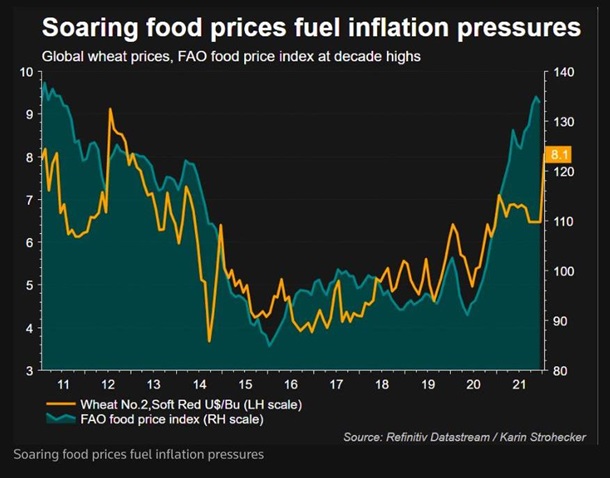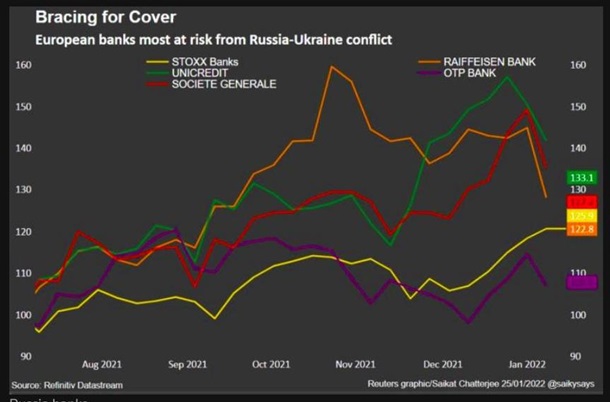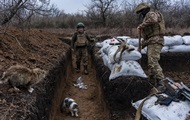Experts have predicted how a full-scale Ukrainian-Russian war will turn out for the world economy.
A full-scale war between Ukraine and Russia for the world economy will have serious consequences. A hot conflict will affect the cost of grain and energy, sovereign bonds, safe-haven assets and stock markets. The price of oil will soar to $150which will cause inflation. Korrespondent.net tells what experts predict.
safe harbors
Inflation and upcoming interest rate hikes have made for a bad month for the bond markets, with US 10-year bond rates still hovering around 2 percent, and Germany’s 10-year yields hitting zero percent for the first time since 2019.
But a military conflict between Ukraine and Russia could change that, writes Reuters, citing interviewed experts.
During big events, investors prefer bonds, which are generally considered the safest assets, and this time it could be the same, even if a Russian invasion of Ukraine risks further pushing up oil prices and therefore inflation, the article says.
In foreign exchange markets, the euro-Swiss franc exchange rate is considered the biggest indicator of geopolitical risk in the euro area, as the national currency of Switzerland has long been viewed as a safe haven by investors.
This week, the Swiss franc soared to its highest level since May 2015, although this was partly due to a wide-ranging sell-off on Wall Street.
Gold, also seen as a safe haven in times of conflict or economic instability, has surged in price over the past two months.
Market dynamics in December-January
–
Grain and wheat
Any interruption in the supply of grain from the Black Sea region will have a strong impact on prices and further fuel food inflation in times of scarcity that have overtaken the world due to the economic damage caused by the coronavirus pandemic.
The four main exporters – Ukraine, Russia, Kazakhstan and Romania – ship grain from ports on the Black Sea, which could face disruptions as a result of any military action or sanctions, the agency said.
Data from the International Grains Council indicates that Ukraine will be the world’s third largest exporter of corn in 2021 and 2022, as well as the fourth largest exporter of wheat. The largest exporter of wheat. remains RF
“In recent months, geopolitical risks have increased in the Black Sea region, which may affect future wheat prices,” says Dominik Schneider, strategist at UBS, Switzerland’s largest financial holding.
 –
–
Dynamics of prices for wheat and products
–
Natural gas and oil
The euro receives about 35 percent of its natural gas from Russia, mostly through pipelines that run through Belarus and Poland to Germany, Nord Stream 2 goes directly to Germany, and others through Ukraine.
Gas volumes from Russia to Europe declined in 2020 due to lockdown restrictions that squashed demand and did not fully recover last year. The sharp increase in consumption has led to record high gas prices.
As part of possible sanctions in the event of a Russian invasion of Ukraine, Germany said it could stop certification of the new Nord Stream 2 gas pipeline from Russia. The pipeline is expected to increase EU gas imports but increase its energy dependence on the Kremlin.
SEB Commodities Analyst Bjorn Schieldrop said markets expect a significant reduction in natural gas exports from Russia to Western Europe through both Ukraine and Belarus in the event of sanctions, with gas prices returning to fourth-quarter levels.
Oil markets could also be hit by restrictions or disruptions. Ukraine exports Russian oil to Slovakia, Hungary and the Czech Republic. According to S&P Global Platts, Ukrainian transit of Russian oil to the EU amounted to 11.9 million metric tons in 2021, compared to 12.3 million metric tons in 2020.
One of the world’s largest banks, JPMorgan, predicts that the situation around Ukraine could lead to a “significant jump” in oil prices – up to $150 per barrel. This will cause global GDP growth to slow to 0.9 percent year on year in the first half of the year and inflation to more than double to 7.2 percent.
 –
–
Gas prices in Europe in December
–
Risks for companies
Listed Western companies could also feel the effects of the war, although for energy companies any hit to revenue or profits could be offset to some extent by a potential surge in oil prices.
The British oil and gas company BP owns a 19.75% stake in Rosneft and also has a number of joint ventures with the largest oil producer in Russia.
British-Dutch oil and gas company Shell owns a 27.5 percent stake in Russia’s first liquefied natural gas plant, Sakhalin-2, which accounts for a third of the country’s total LNG exports, and has several joint ventures with Russia’s state concern Gazprom.
The US energy company Exxon operates through a subsidiary of the Sakhalin-1 oil and gas project, in which the Indian state-owned oil and natural gas corporation, Oil and Natural Gas Corp., also has a stake.
The Norwegian company Equinor is also active in Russia.
Austrian Raiffeisen Bank International generated 39 percent of estimated net income from its Russian subsidiary last year, Hungarian OTP and UniCredit about seven percent of theirs, while Societe Generale generated six percent of net income from Rosbank’s retail operations. The Dutch financial company ING is also present in Russia.
All the mentioned assets will be under tangible risks.
In terms of Russia’s credit risk, French and Austrian banks are the largest among Western lenders, with $24.2 billion and $17.2 billion, respectively. They are followed by US creditors with $16 billion, Japanese creditors with $9.6 billion and German banks with $8.8 billion.
Other sectors will also be negatively impacted. Germany’s Metro AG’s 93 Russian stores account for just under ten percent of sales and 17 percent of core profits, while Danish brewer Carlsberg owns Baltika, Russia’s largest brewer with a market share of nearly 40 percent.
 –
–
Falling income of foreign banks in Russia
–
Currencies of Ukraine and Russia
Ukrainian and Russian assets will be the most vulnerable to the negative consequences of possible military actions.
Both countries’ dollar bonds have become less popular in recent months as investors cut their positions amid escalating tensions between Washington, its allies and Moscow.
Fixed income markets in Ukraine are largely run by emerging market investors, while Russia’s overall share of the capital markets has declined in recent years due to sanctions and geopolitical tensions, which will somewhat mitigate any threat of “contagion” through these channels.
Intrusion threat. How Ukrainian markets fell
The hryvnia and ruble have already suffered in 2021, making them the worst-performing emerging market currencies.
The situation on the Ukrainian-Russian border represents “substantial uncertainty” for currency markets, said Chris Turner, head of global markets at ING.
“The events of late 2014 remind us of the liquidity shortage and accumulation of US dollars that led to a significant drop in the ruble at that time,” Turner said.
 –
–
–
News from Korrespondent.net in Telegram. Subscribe to our channel https://t.me/korrespondentnet
–


